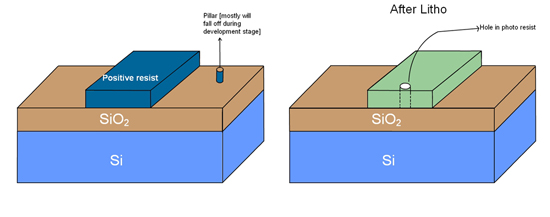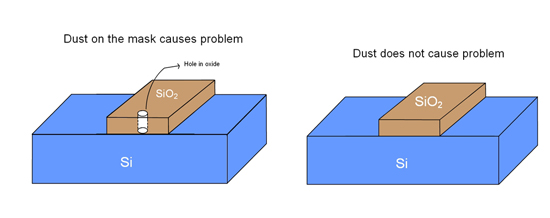Now, in ideal case, there will not be any dust present and the lithography (exposure and developing) followed by etching will give the required structure. However, if dust particle falls on the mask, then a problem may arise. If the dust particle falls on the area which is already blocking the light, then it will continue to block the light and there will not be any issue. However if it falls in the transparent area, then the following scenario will arise in positive and negative resist cases.
If the particle is small, then it will block the light in a small area. In positive resist case, the structure, after developing will have small pillar like structures. Usually these pillars will not be stable and hence will fall away during the developing process. But if the particle is large, then they will protect the material below them, during the etch process. Thus, the structure will not be formed correctly if the particle is large.
In case of negative resist, even if the particle is small, it will result in a pinhole during developing stage and subsequently in the etching. Thus the structure will not be formed correctly for small as well as large dust particle. Hence, positive resist process is relatively more robust.



Fig 2.6 Dust falling on transparent areas.
|